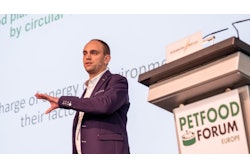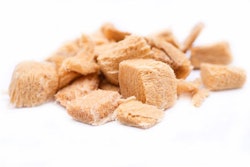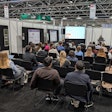
Waste reduction in pet treat extrusion represents a critical yet often underestimated opportunity for manufacturers to improve both profitability and sustainability, according to Paul Mortlock, managing director and CEO of Frazer-Nash Manufacturing.
During the Reducing waste in pet treat extruder production education session at Petfood Forum Asia, Mortlock and his co-presenter, Steve Plas, strategy director with Frazer-Nash, will examine the often-overlooked sources of waste in pet treat extrusion manufacturing, including scrappage and overweight product giveaway caused by poor process control and variability.
"Material losses below 3% have historically been considered world-class performance," Mortlock says. "In my own experience, we viewed sustained losses below 1.5% as 'best in class.' Yield performance was always a top operational priority because of its immediate financial impact."
The financial stakes are substantial, he notes. In multi-extruder facilities, each yield point often represents several hundred thousand dollars — and in some cases exceeding $500,000 — in annual value, making waste reduction a strategic lever with direct implications for profitability and competitiveness.
Hidden sources of waste
Mortlock identifies unplanned downtime as one frequently overlooked source of waste in both extrusion and packaging areas. Each unplanned event results in additional startups and shutdowns, impacting yield and waste generation.
"The challenge lies in the fact that reducing downtime requires significant organizational commitment, cross-functional effort and investment," he says. "As a result, businesses can unintentionally under-prioritize it, despite its substantial effect on yield."
Another often-overlooked factor is moisture balance. The differential between raw ingredient moisture and finished product moisture inevitably leads to yield loss. While largely unavoidable, Mortlock notes that quantifying and managing this loss offers valuable insight into overall efficiency and provides a clearer baseline for process optimization and proper product costing.
Poor process control and variability also contribute significantly to waste through scrappage and overweight product giveaway. Mortlock emphasizes that extruder output variability is often poorly managed, yet better control in this area can achieve significant cost savings.
Maintenance impacts on performance
Extruder performance and output variability depend heavily on maintenance practices, according to Mortlock. Wear is driven not just by cumulative run hours but also by the types of formulations being processed, including high-fiber, high-cereal and high-fat recipes.
"Because rebuilds are expensive and downtime is disruptive, extending the mean time between rebuilds can occur," he says. "While understandable, this type of decision can negatively impact the stability of the extruder and generate incremental waste."
Mortlock notes growing interest in predictive maintenance tools, which improve planning accuracy, extend useful equipment life and optimize costs. For companies prepared to adopt a more data-driven approach, this represents a powerful opportunity to reduce variability and strengthen process control.
Practical solutions
The starting point for waste reduction is visibility, Mortlock says. Manufacturers must first map where losses occur, recognizing that waste typically arises from multiple sources and process locations. Once data is captured, a structured strategy can be applied, combining equipment optimization, operator training and strong process discipline.
Key solutions include implementing mechanical controls for extruder output without requiring individual flow restrictors or manual intervention, which helps minimize systematic waste.
"It is equally important to consider lifecycle costs," Mortlock says. "As equipment ages, yield performance often declines, and waste levels rise incrementally over time. By defining lifetime cost expectations and embedding clear maintenance and replacement processes, manufacturers can proactively mitigate these hidden drivers of waste."
Strategic implications
Mortlock emphasizes that waste reduction should be managed as a continuous improvement program that aligns operational excellence, cost management and long-term sustainability objectives.
The implications extend beyond immediate cost savings. Disposal of waste streams can be both complex and costly, making rework and recovery strategies increasingly valuable. The most effective approach is to reincorporate materials back into the production process whenever possible, he says.
"Many manufacturers are adopting Zero Waste to Landfill strategies, where cutting waste at its source becomes essential," Mortlock says. "In this context, yield management is no longer just an operational metric — it becomes central to corporate sustainability commitments."
By embedding waste reduction into operational culture, manufacturers not only improve efficiency and profitability but also enhance their credibility with consumers, regulators, supply chain partners and investors, positioning themselves as leaders in an industry where efficiency, sustainability and competitiveness are increasingly inseparable.
Petfood Forum Asia will feature exclusive sessions and networking opportunities focused on the Asian pet food market. The one-day seminar will be co-located with Pet Fair South East Asia on October 29 in Bangkok, Thailand. To register, click here.
















